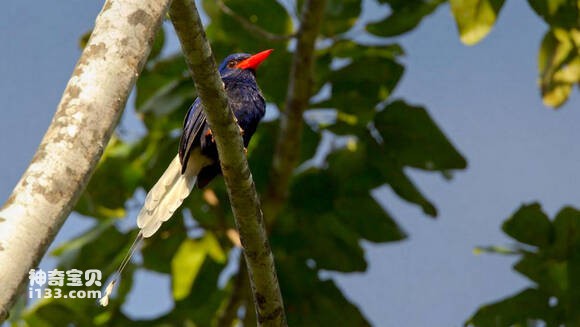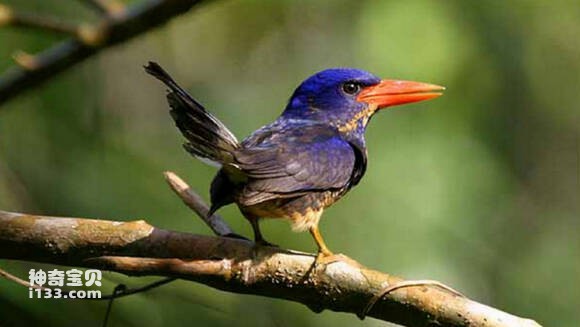Tanysiptera carolinae
IUCN
LCBasic Information
Scientific classification
- name:Tanysiptera carolinae
- Scientific Name:Tanysiptera carolinae,Numfor Paradise Kingfisher
- Outline:Climbing birds
- Family:
Vital signs
- length:About 26 cm
- Weight:No textual research information is available
- lifetime:No textual research information is available
Feature
The head, body, and wings are purple-blue, but the color is not consistent
Distribution and Habitat
Blue Fairy jade is found on the island of Nongfaul in Indonesia and in Geelvink Bay in northwestern New Guinea.
The Blue Fairy emerald is a common species that lives in all lowland habitats, including coastal vegetated areas and forested areas that have suffered significant habitat destruction due to human overexploitation of the environment.
Appearance
The Blue fairy jade is 26cm long, including streamers or tail feathers 36-40cm long. Both sexes are the same. The head, body and wings are purple-blue, but the color is not consistent, the upper body and wings are more vivid color, shoulder, lower back, tail, mantle almost black. The tail is white. There are two long 12 cm long dark blue streamers with tail feathers that end in the shape of a puffed white bat. The cover of the wings is black. Red mouth, dark brown iris. The legs are olive brown.
Young birds differ from adults in many ways. Like their parents, they have the deepest blue-purple on the head and white on the tail, but they have alternating red and black stripes. The tail, on the other hand, is black mixed with blue and white. Lower body is different: cinnamon-colored chin and throat, chest and abdomen with some reddish purple feathers.
Details
Blue fairy jade scientific name Tanysiptera carolinae, foreign name Numfor Paradise Kingfisher, no subspecies.

Blue jade like to wash feathers in the pond, is a completely carnivorous kingfisher, its hunting technology and other kinds of hunting kingfisher is roughly the same, lonely, usually alone in the water near the branches or rocks, hunting, often straight to the water and the low branches and reeds often stop on the rocks, waiting for the opportunity to prey on fish and shrimp, kingfisher into the water, It can also maintain excellent vision, because after it is in the water, the eye can quickly adjust the visual contrast caused by the light in the water. So the kingfisher fishing ability is almost 100 percent, there is no false hair. Often hidden in the shade of the tree near the water to prey on fish and shrimp. His head hardly moves while he stands, and his tail wags from time to time. It spends most of its time on the ground searching for food, digging through the soil with its mouth to prey on insects, including snails, beetles, grasshoppers, caterpillars, centipedes, earthworms, and small reptile lizards. Sometimes it makes the feathers very dirty.

Both sexes will jointly dig a termite hollow in a tree about 1.2 meters above the ground for a nest. Size 15 cm x 13 cm. The female usually lays five eggs, and both raise the chicks together.

Listed on the International Union for Conservation of Nature (IUCN) 2013 Red List of Threatened Species ver 3.1 - Near Threatened (NT).
Protect wild animals and eliminate wild meat.
Maintaining ecological balance is everyone's responsibility!








